We know that vitamin D is considered a nutrient of concern by the Dietary Guidelines for Americans, which means that most people don’t get enough of it. But according to the latest study from the Journal of Dermato-Endocrinology, the situation is more dire than that. In fact, the authors of the study Photobiology of vitamin D in mushrooms and its bioavailability in humans declare that “Vitamin D deficiency is a pandemic.”
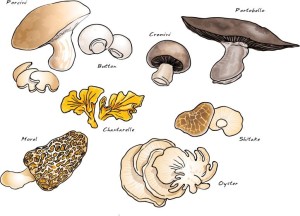 Since vitamin D deficiency has raised the risk of a variety of chronic diseases and skeletal diseases, getting enough vitamin D should be high on your clients’ to-do lists. Getting enough vitamin D will reduce the risk of disease and boost health, which can make selling this goal to your clients much easier. In fact, Keegan et.al. assert “obtaining vitamin D from sensible sun exposure, foods that naturally contain vitamin D, and from supplementation with vitamin D is imperative to maintain a healthy lifestyle.”
Since vitamin D deficiency has raised the risk of a variety of chronic diseases and skeletal diseases, getting enough vitamin D should be high on your clients’ to-do lists. Getting enough vitamin D will reduce the risk of disease and boost health, which can make selling this goal to your clients much easier. In fact, Keegan et.al. assert “obtaining vitamin D from sensible sun exposure, foods that naturally contain vitamin D, and from supplementation with vitamin D is imperative to maintain a healthy lifestyle.”
So, it’s time to look at the study and determine how mushrooms could play a role in good health.
But, before we begin, we want to draw your attention to the disclaimer we found at the bottom of the article…
“This work was supported by The Mushroom Council and from the National Institutes of Health Clinical Translational Science Institute Grant UL1-TR000157. The funders had no role in study design, data collection and analysis, decision to publish or preparation of the manuscript; ClinicalTrials.gov Identifier: NCT01815437.”
Anyway, now you know who supported this study and to what degree. Let’s move on to the science.
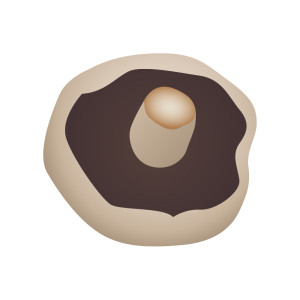 According to the study, “Mushrooms exposed to sunlight or UV radiation are an excellent source of dietary vitamin D2 because they contain high concentrations of the vitamin D precursor, provitamin D2.” Furthermore, “ingestion of 2000 IUs of vitamin D2 in mushrooms is as effective as ingesting 2000 IUs of vitamin D2 or vitamin D3 in a supplement in raising and maintaining blood levels of 25-hydroxyvitamin D which is a marker for a person’s vitamin D status.”
According to the study, “Mushrooms exposed to sunlight or UV radiation are an excellent source of dietary vitamin D2 because they contain high concentrations of the vitamin D precursor, provitamin D2.” Furthermore, “ingestion of 2000 IUs of vitamin D2 in mushrooms is as effective as ingesting 2000 IUs of vitamin D2 or vitamin D3 in a supplement in raising and maintaining blood levels of 25-hydroxyvitamin D which is a marker for a person’s vitamin D status.”
In other words, mushrooms are as effective as vitamin D supplements when it comes to raising vitamin D to reasonable levels in the body.
But how do mushrooms become vitamin D powerhouses?
The researchers explain, “When exposed to UV radiation, mushrooms become an abundant source of vitamin D2.” That’s how they can be used as vitamin D boosters to help people reduce their risk of disease.
The study concludes, “Therefore ingesting mushrooms containing vitamin D2 can be an effective strategy to enhance the vitamin D status of the consumer. The observation that some mushrooms when exposed to UVB radiation also produce vitamin D3 and vitamin D4 can also provide the consumer with at least two additional vitamin Ds.”
So, the bottom line is that most people don’t get enough vitamin D, but consuming mushrooms exposed to UV radiation could help people improve their vitamin D profiles.
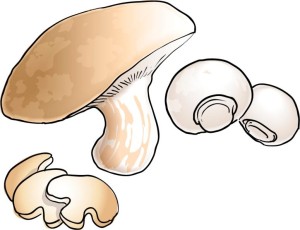 Want to help your clients eat more mushrooms? Here are the top 5 mushroom recipes from Food and Health Communications!
Want to help your clients eat more mushrooms? Here are the top 5 mushroom recipes from Food and Health Communications!
And, because I love ya, here’s a free handout that features the Chicken with Mushrooms recipe. Share it with your clients and help them get enough vitamin D!
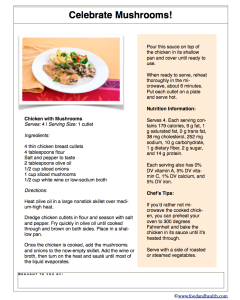
For More Information:
For More Nutrition Education Resources:
Check out the Nutrition Education Store — here are a few recent educator favorites…

Basic Nutrition Handout Set

Exercise Poster
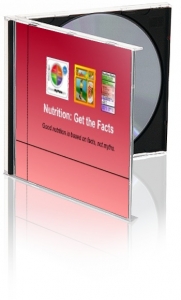
Nutrition Basics PowerPoint









